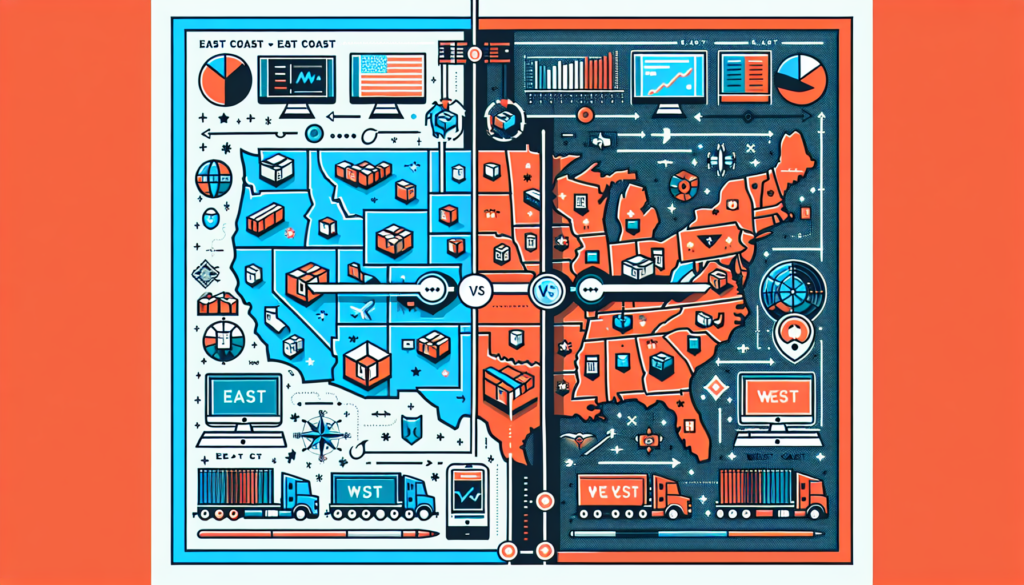One of the main differences between the East Coast and West Coast e-commerce fulfillment strategies is the proximity to major ports and transportation hubs. The East Coast is home to major ports such as New York, Miami, and Savannah, which provide easy access to international markets. On the other hand, the West Coast boasts major ports like Los Angeles and Long Beach, which are key entry points for goods coming from Asia.
In terms of transportation infrastructure, the East Coast has a well-developed network of highways and railways that connect major cities and distribution centers. This allows for efficient transportation of goods to customers across the region. Conversely, the West Coast is known for its extensive network of highways and freeways, which facilitate the movement of goods to customers in states like California, Oregon, and Washington.
Another important factor to consider when comparing East Coast and West Coast e-commerce fulfillment strategies is the cost of real estate. The East Coast, particularly in cities like New York and Boston, tends to have higher real estate prices compared to the West Coast. This can impact the cost of warehousing and distribution centers, which are essential components of e-commerce fulfillment operations.
When it comes to labor costs, the East Coast generally has higher wages compared to the West Coast. This can impact the overall operating expenses of e-commerce fulfillment centers, as labor costs are a significant component of the total cost of operations. Businesses need to consider these differences when deciding where to set up their e-commerce fulfillment operations.
In terms of customer demographics, there are differences between the East Coast and West Coast markets. The East Coast has a larger population density compared to the West Coast, which can make it an attractive market for e-commerce businesses looking to reach a larger customer base. On the other hand, the West Coast has a reputation for being tech-savvy and early adopters of new technologies, making it a prime market for e-commerce businesses that focus on innovation.
Overall, both the East Coast and West Coast offer unique advantages and challenges for e-commerce fulfillment strategies. Businesses need to carefully consider these factors when developing their logistics operations to ensure they are able to meet customer demands efficiently and cost-effectively.
**FAQs**
1. What are the key differences between East Coast and West Coast e-commerce fulfillment strategies?
– The key differences include proximity to major ports, transportation infrastructure, real estate costs, labor costs, and customer demographics.
2. How can businesses decide between the East Coast and West Coast for their e-commerce fulfillment operations?
– Businesses should consider factors such as market access, operating costs, customer demographics, and transportation infrastructure when deciding between the East Coast and West Coast.
3. What are some of the advantages of setting up e-commerce fulfillment operations on the East Coast?
– Advantages of the East Coast include proximity to major ports, well-developed transportation infrastructure, and access to a large population base.
4. What are some of the advantages of setting up e-commerce fulfillment operations on the West Coast?
– Advantages of the West Coast include access to major ports, a tech-savvy customer base, and lower real estate costs compared to the East Coast.
In conclusion, understanding the differences between East Coast and West Coast e-commerce fulfillment strategies is essential for businesses looking to optimize their logistics operations. By considering factors such as proximity to ports, transportation infrastructure, operating costs, and customer demographics, businesses can make informed decisions about where to set up their e-commerce fulfillment operations.
For more information on e-commerce fulfillment strategies, visit Fulfillment Hub USA at https://fulfillmenthubusa.com.
[ad_2]
